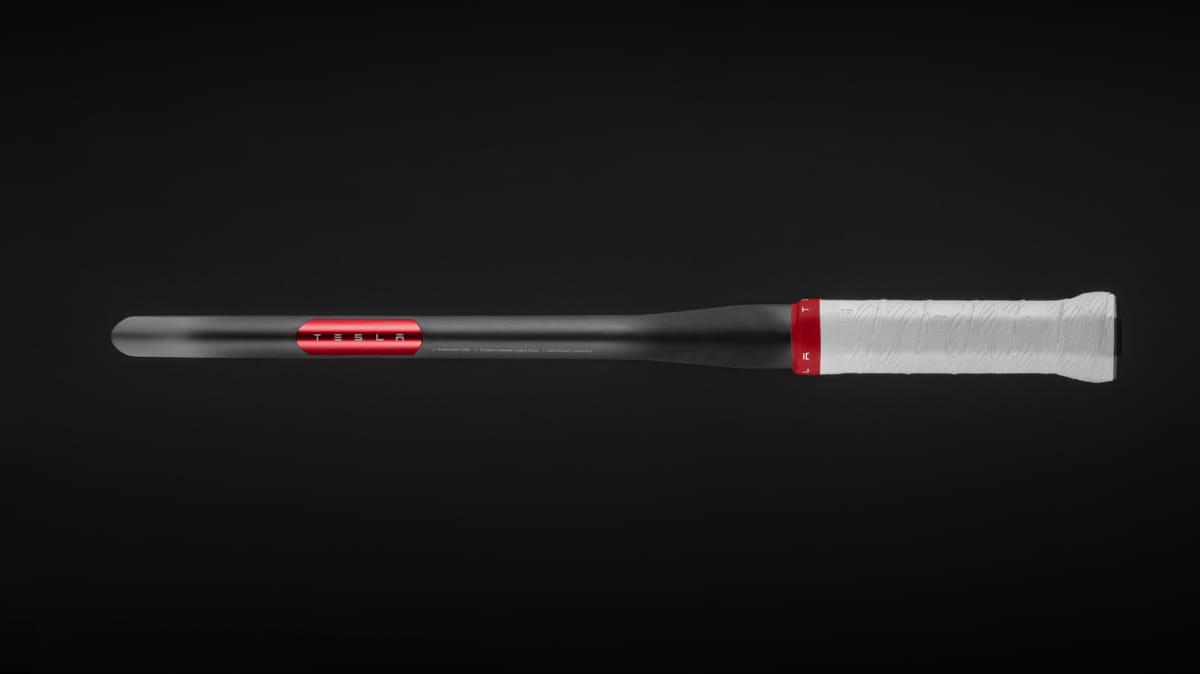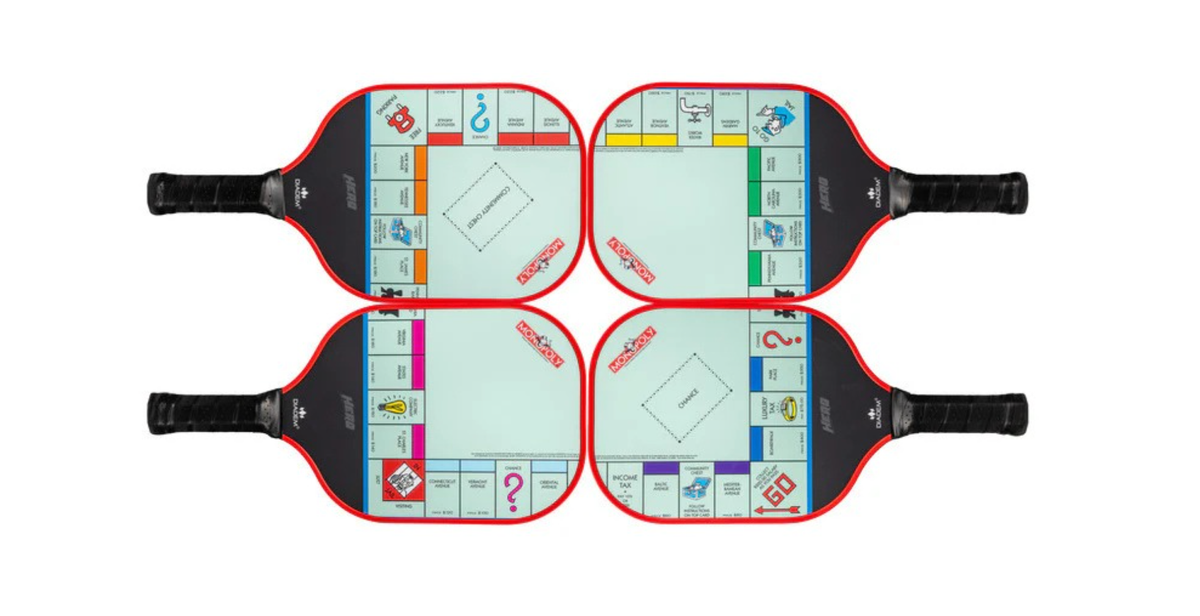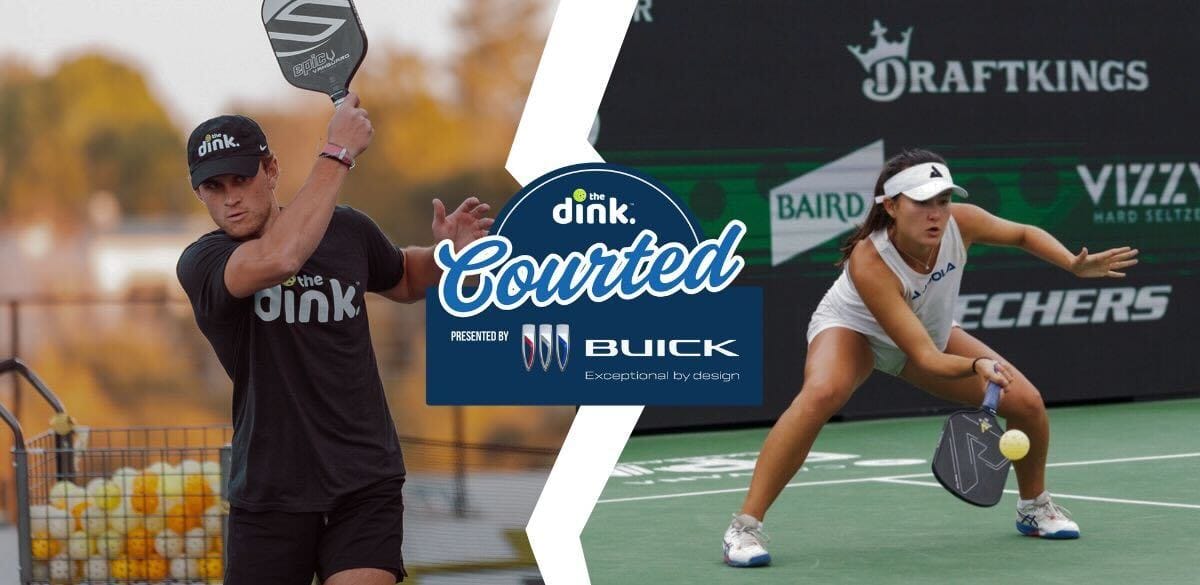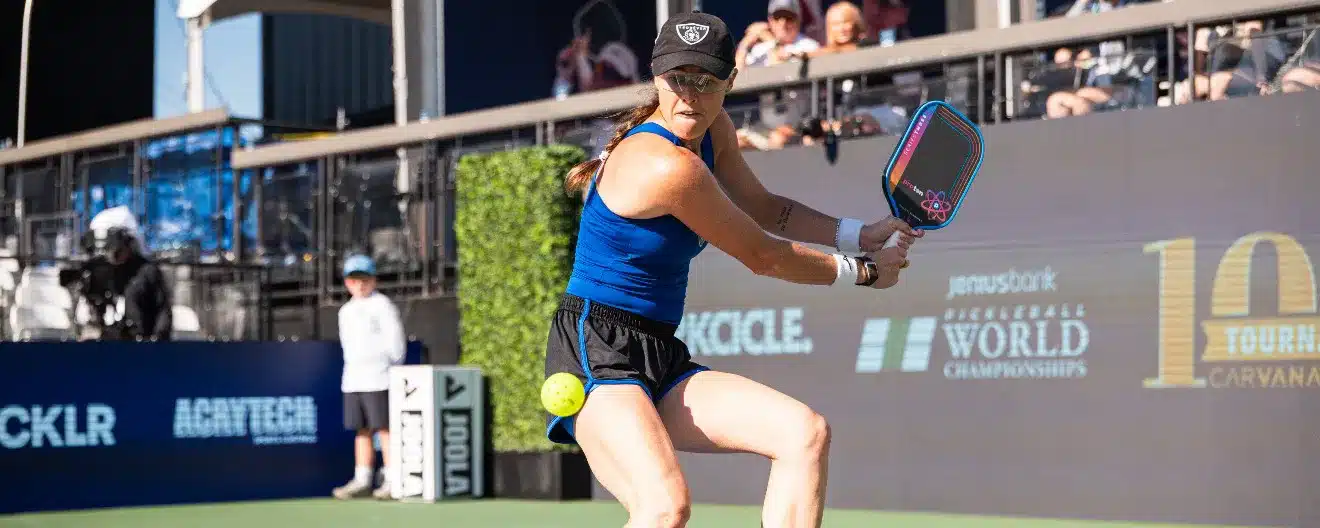You’ve played a few games, grasped scoring (most of the time 😂) and are hooked: what are the first steps in actually getting better? Even at the highest levels, pickleball is won at the No Volley Zone (NVZ) line;staying at the baseline is a route to failure against experienced players. If you can improve your ability to get to the NVZ and stay in points there, you will win more points. To feel confident to move forward, players want to have a stroke to do so without getting attacked by a fearsome drive or volley. How do we do that? Read on…
The importance of the dink and its mechanics cannot be understated. The definition of a dink is an unattackable ball that lands in your opponent’s NVZ. The key concept is making the shot unattackable, and that means it bounces below net height at its apex, after landing on the opponent’s side of the court. The unique nature of a pickleball’s bounce in comparison to a tennis ball allows this to happen and the NVZ is the other key component of this strategy. It means that the softer dink shot won’t get picked off near the net with a volley, unlike in tennis.
A key concept in coaching is that the simpler a physical skill mechanic is, the less there is to go wrong under pressure. Overly complicated swings, body movements and addition of spin increases the margin for error. A dink’s strategic intention is rarely to win the point outright but to make the opponent play one more stroke, preferably whilst they are moving or off balance. If you can have a simple reliable dink that’s unattackable, you can then place the ball where you want it.
Lee Whitwell says that you are often just handing the ball back to the opponent when dinking. To paraphrase “If you were passing an apple to someone, you wouldn’t make a massive backswing and elaborate movements, you’d just hand it over: a dink needs to be the same.”
Swinging forwards from your shoulder, with a gentle two or three out of ten grip pressure and making contact forward of your body is all you need to do. There’s no need for a big take back/backswing or even any backswing at all: place your paddle where the ball is going to be and swing forwards gently is all you need to do. IPTPA coaches refer to the pendulum swing: think of a grandfather clock or a Newton’s cradle for the simple fluidity of the swing.
This creates a strong core foundation swing to then layer on spin, misdirection and shaping as you grow in confidence and reliability. It also forms the basis of an effective third shot drop: when on the serving team, this next shot can allow you to move into the NVZ comfortably. If you can make a ball land softly in the NVZ from the baseline and follow in behind it, you can get your team to a neutral position with all four players “at the line”.
All IPTPA coaches refer to this as the third shot long dink (3SLD), as it is just a dink hit from further back with more follow through. The most common errors I see on this stroke are using a big backswing, leaning back when you make contact or not respecting the net. Here’s how they go wrong and how to fix them.
- A big backswing tends to send the ball longer than required and allows the net players to hit a volley. If you just exaggerate the basic follow through from the dink, you get the depth, height and length for a 3SLD. One of my maxims is that “pickleball is follow through, not backswing”: dinks, serves, returns, volleys, drives, 3SLD, lobs are all driven predominantly by the length and type of follow through. Very few shots in pickleball are about backswing: some smashes, swing volleys but the bulk is follow through driven. There isn’t the time for backswing with a small court: backswing can mean drag and air resistance to impede paddle speed and pace of stroke, as well as a key visual cue as to what you are going to do.
- Leaning back on a 3SLD is often caused by late preparation or movement: the ball ends up short and in the net. If you can make the momentum from your body to go upwards and forwards, you’ll have more success: a focus on not resting back on your heels and a good knee bend to release upwards can really help. Get in position early if you can.
- Not respecting the net is possibly the most common misunderstanding and error. If you hit a 3SLD from the baseline and the apex (peak of the arc of the ball) is six feet above the court as it passes the NVZ on YOUR side of the net, the ball will land in your opponent’s NVZ and bounce below the height of the net. That’s an unattackable ball that allows you to move forwards to the NVZ and prevent a drop shot you can’t reach by staying back. As your level improves, you may need to add some additional elements to this shot but starting out, this tactic and stroke will work.
The best way to master the 3SLD is to start with basic dinks at the NVZ then slowly work backwards to the baseline, with the feeder continuing to hit the balls near to you and you still aiming to land an unattackable ball in the NVZ. By working methodically backwards and moving back only when comfortable at that range, you can start to hit successful long dinks very quickly, as you tune in your stroke for each distance. To keep it interesting with four players on court, play a game where the baseline is five feet further in than normal so it’s easier to hit the long dink and move in. It’s the next level to layer in after drilling. Perhaps play a normal game where the third shot has to land in the NVZ or you have to restart the point or maybe even lose the point totally.
As your skills grow and start to drill more, you can keep score of how many successful long dinks are hit from each location from your forehand and backhand: to qualify as an IPTPA level 2, a coach has to hit eight out of ten long dinks into the NVZ from the baseline, cross court and down the line, for both forehand and backhand as part of their 23 skill play test. See if you can match the coaches as a long term goal.
What do you do if you don’t quite get it right on those long dink shots in a game? There’s another blog all about that one…
Anuncie Aqui / Advertise Here
Sua marca para o mundo Pickleball! / Your brand for the Pickleball world!

 English
English  Spanish
Spanish  Portuguese
Portuguese  German
German  Italian
Italian  Japanese
Japanese  French
French  Polish
Polish  Russian
Russian  Netherlands
Netherlands  Hungarian
Hungarian  Turkish
Turkish  Videos
Videos  Pickleball England
Pickleball England








 English (US) ·
English (US) ·  Portuguese (BR) ·
Portuguese (BR) ·